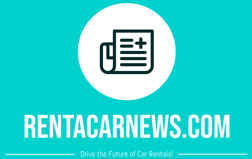Public Transport in the USA: Challenges and Opportunities
Public transportation in the United States plays a crucial role in connecting people to jobs, education, and essential services. While public transit systems in major metropolitan areas provide millions of daily rides, the overall efficiency, accessibility, and funding of transit networks remain significant challenges. The current state of public transportation in the United States, its challenges, and potential opportunities for improvement are examined in this article. Current State of Public Transport Public transit in the USA varies widely by region. Major cities such as New York, Chicago, and Washington, D.C., have extensive networks that include subways, buses, and commuter trains. In contrast, many mid-sized and smaller cities have limited transit options, often relying on buses with infrequent service. The primary modes of public transportation include: Subways and Metro Systems: These systems, which can be found in cities like New York, Boston, and San Francisco, offer quick and frequent transportation for millions of commuters every day. Buses: The most widely used mode of public transport, available in almost every city, but often subject to delays due to traffic congestion. Commuter Rail: Serves suburban areas connecting to major urban centers, with systems like Metra in Chicago and the Long Island Rail Road in New York. Light Rail and Streetcars: Found in cities like Portland, Minneapolis, and Dallas, these systems provide an alternative to buses for shorter urban commutes. Microtransit and ride-sharing are new services that provide on-demand transportation in underserved areas to complement conventional public transportation. Challenges Facing Public Transportation Despite its importance, public transportation in the USA faces several challenges: Insufficient Funding: Many transit agencies struggle with budget constraints, leading to outdated infrastructure, unreliable service, and inadequate maintenance. Limited Service in Rural and Suburban Areas: Many Americans need a car because public transportation is rarely available outside of major metropolitan areas. Aging Infrastructure: Many transit systems, especially in older cities, suffer from decades-old infrastructure that requires significant investment for modernization. Declining Ridership: With the rise of remote work and the convenience of personal vehicles and ride-sharing services, public transit ridership has declined in many areas. Environmental Concerns: While public transport is generally more eco-friendly than private cars, diesel-powered buses and outdated trains still contribute to pollution. Opportunities for Improvement Addressing these challenges requires strategic investments and policy changes to make public transit more efficient, accessible, and sustainable. Some potential solutions include: Increased Federal and State Funding: Investing in transit infrastructure to expand coverage, improve reliability, and modernize aging systems. Adoption of Green Technology: Transitioning to electric buses and trains to reduce emissions and promote sustainability. Better Urban Planning: Encouraging transit-oriented development (TOD) to create walkable communities with easy access to public transport. Integration of Technology: Implementing smart transit solutions such as real-time tracking, contactless payment systems, and AI-driven route optimization. Enhanced Accessibility: Improving services for disabled and elderly passengers to ensure equitable access to public transit. Conclusion Public transportation remains a vital component of urban and regional mobility in the USA. While challenges persist, strategic investments and technological advancements present opportunities to create a more efficient, sustainable, and accessible transit system. By prioritizing public transportation, the nation can reduce traffic congestion, lower carbon emissions, and improve the quality of life for millions of Americans.
5/8/20241 min read


Car rental insights
